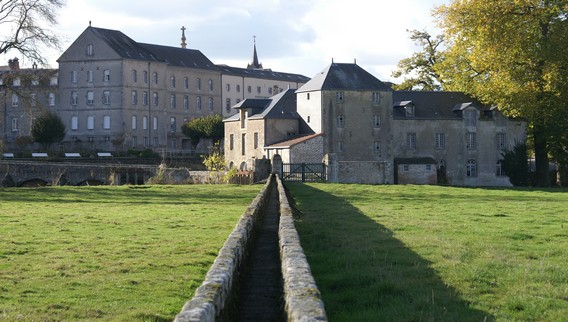Plassard, Encrevier, Bodet, Barbin, Chaussac… in Saint-Laurent-sur-Sèvre, there’s a watermill every 300 metres !
Most of them were built in the 14th century, and only the Moulin de la Sagesse dates from the 19th. Construction of these many water-powered mills helped the town of Saint-Laurent grow very quickly…
Its distance from major cities no longer hindered its growth. Fullers, dyers, weavers, carders, rag pickers -rags used for paper making- and other fabric merchants understood only too well that with all these mills, work would not be hard to come by in Saint-Laurent !
By the 19th century, the local economy was booming.
Weavers and spinners packed the town.
Muleteers came and went, their animals loaded down with bales of fabric or reams of paper.
Carpenters and mill wheelwrights traveled from mill to mill to sort out mechanical problems.
The industry of the Sèvre Nantaise flourished.
Some mills, like the Bodet Mill, continued in operation into the 20th century.
Purchased in 1867, the mill was altered to become the Saint-Joseph laundry.
It used all the traditional laundering processes of washing, rinsing, desizing, disentangling and open-air drying.
This final stage of the operation produced a highly sought-after “blued” white fabric.
Despite its undoubted quality, it was not without competition. So the Saint-Joseph laundry introduced more services: dyeing, texturizing, fabric stabilization, artificial ageing and other enhancement techniques.
Tools and equipment were modernized: weaving became a mechanical process, and steam engines and tall boiler chimneys began to appear.
Every resource was used to boost production, but the decline had already begun.
The 1930s saw the end of the traditional laundering of white fabric, to be replaced by chemical (chlorine) bleaching.
Then the garment making workshop closed, followed by the mechanical weaving looms.
The factory was reopened on many occasions, but finally fell silent in 2007.
It marked the final end of the active life of the mills of Saint-Laurent-sur-Sèvre.










